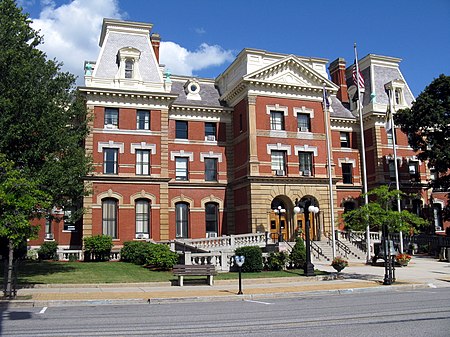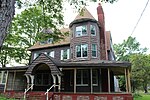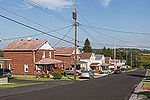Ebensburg, Pennsylvania

Ebensburg is a borough and the county seat of Cambria County in the U.S. state of Pennsylvania. It is located 25 miles (40 km) west of Altoona and surrounded by Cambria Township. It is situated in the Allegheny Mountains at about 2,140 feet (650 m) above sea level. Ebensburg is located in a rich bituminous coal region. In the past, sawmills, tanneries, wool mills, and a foundry operated there. The number of residents in 1900 was 1,574, and in 1910, 1,978. The population was 3,351 at the 2010 census. It is part of the Johnstown, Pennsylvania Metropolitan Statistical Area. Ending in Ebensburg is the Ghost Town Trail, a rail trail established in 1991 on the right-of-way of the former Ebensburg and Black Lick Railroad. Also of note, next to the old Cambria County Jail, is the Veterans Park of Cambria County honoring the men from Cambria County who fought in the Revolutionary War, War of 1812, Mexican-American War, Civil War, and the Spanish-American War.
Excerpt from the Wikipedia article Ebensburg, Pennsylvania (License: CC BY-SA 3.0, Authors, Images).Ebensburg, Pennsylvania
North Cherry Street,
Geographical coordinates (GPS) Address Nearby Places Show on map
Geographical coordinates (GPS)
| Latitude | Longitude |
|---|---|
| N 40.486388888889 ° | E -78.725555555556 ° |
Address
North Cherry Street
15931
Pennsylvania, United States
Open on Google Maps








